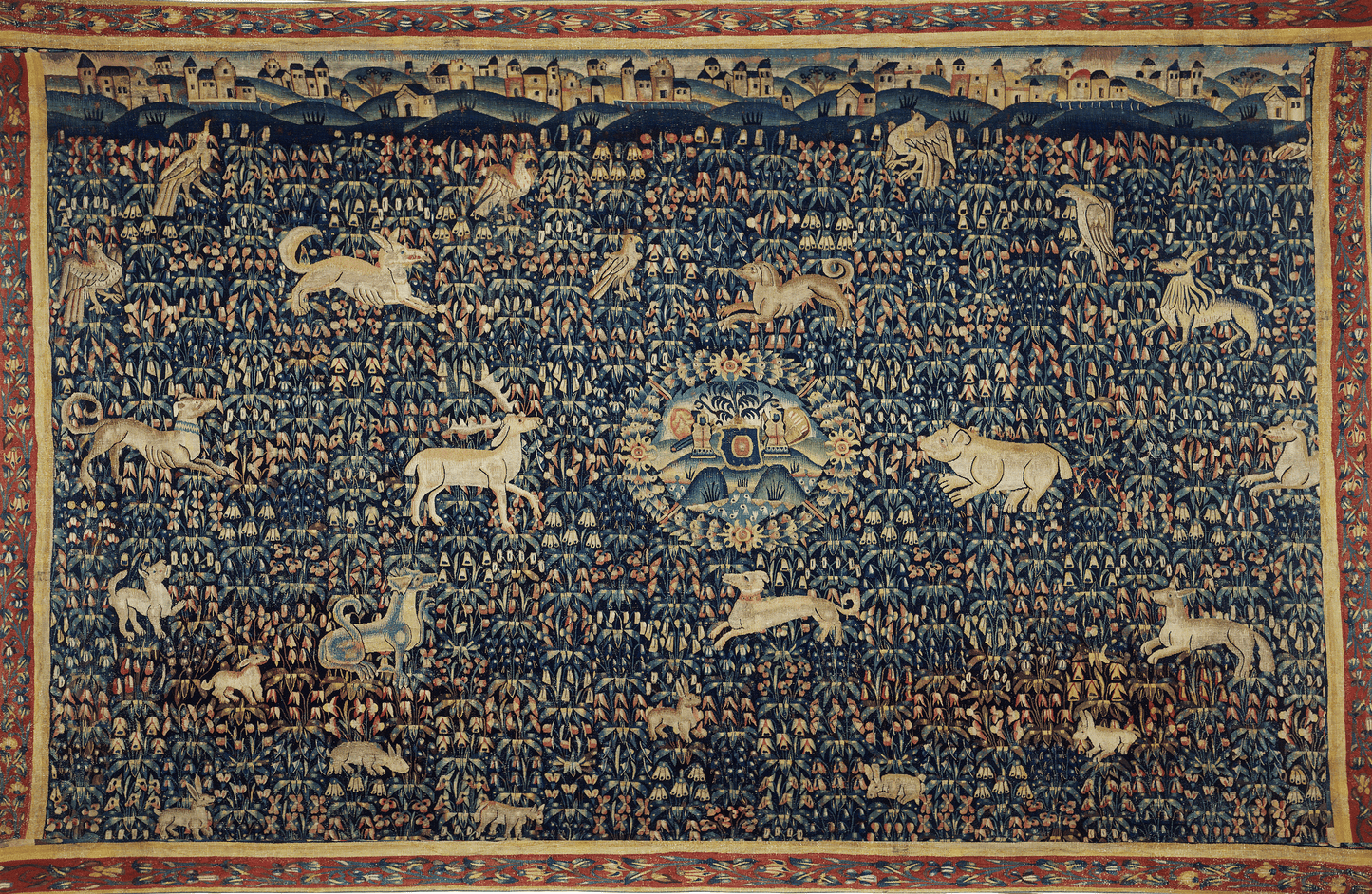Romantic English
Pastoral Harmony: A Flemish Millefleurs Tapestry Featuring an Enchanting Array of Animals and Mythical Creatures Amidst a Rich Floral Background, Late 15th to Early 16th Century RE799366
Pastoral Harmony: A Flemish Millefleurs Tapestry Featuring an Enchanting Array of Animals and Mythical Creatures Amidst a Rich Floral Background, Late 15th to Early 16th Century RE799366
Couldn't load pickup availability
Pastoral Harmony: A Flemish Millefleurs Tapestry Featuring an Enchanting Array of Animals and Mythical Creatures Amidst a Rich Floral Background, Late 15th to Early 16th Century RE799366
This medieval tapestry is an exemplary piece from the millefleurs tradition, renowned for its intricate and densely packed floral backgrounds, interspersed with a variety of animals and mythical creatures. Millefleurs, translating to "thousand flowers," refers to the technique of filling the background with a myriad of small, colorful flowers, creating a lush, tapestry-like garden scene. This particular tapestry likely dates from the late 15th to early 16th century and was woven in a Flemish workshop, a region celebrated for its exceptional tapestry production during this period.
Description:
The tapestry showcases an enchanting and detailed pastoral scene teeming with various animals such as deer, dogs, birds, and even a mythical creature resembling a dragon. Each animal is depicted with remarkable detail, showcasing the weaver's skill in capturing the textures and movements of these creatures. The animals are set against a dense floral background, typical of the millefleurs style, which includes an array of blooming flowers, leafy plants, and creeping vines, all woven in rich, vibrant colors.
The central motif of the tapestry features a decorative medallion with a heraldic emblem, possibly indicating the noble lineage or patronage of the original commissioner. Surrounding this medallion, the tapestry is alive with movement and interaction among the animals, creating a lively and dynamic scene. The upper part of the tapestry depicts a series of quaint, medieval buildings and castles set against a serene, hilly landscape, adding depth and context to the scene below.
The border of the tapestry is adorned with a repeating pattern of floral and geometric designs, framing the central scene and adding to its visual complexity. The use of a millefleurs background not only highlights the natural beauty of the depicted flora and fauna but also serves as a testament to the tapestry's role in medieval interiors as both a decorative and functional piece, providing insulation and color to the stone walls of castles and manors.
Historical Context and Significance:
This tapestry represents the height of Flemish tapestry weaving, a craft that flourished in cities like Brussels and Bruges during the medieval period. The millefleurs style was particularly popular in the 15th and 16th centuries, reflecting the medieval fascination with nature and the symbolic meanings of flowers and animals. Such tapestries were often commissioned by wealthy patrons to demonstrate their status and refined taste, as well as to provide warmth and aesthetic pleasure within their homes.
The meticulous detail and vibrant colors of this tapestry suggest it was a high-status commission, likely made for a noble family. The inclusion of both real and mythical animals reflects the medieval imagination and the symbolic significance attributed to different creatures. For instance, the unicorn, often seen in such tapestries, symbolized purity and grace, while the lion represented strength and courage.
This millefleurs tapestry is a masterpiece of medieval textile art, embodying the rich naturalistic and symbolic traditions of the time. It continues to captivate viewers with its intricate details, vibrant colors, and the enchanting world it depicts.
Share


